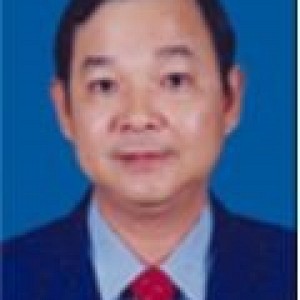Search Papers
6 papers
OVERVIEW OF SUBMERGED CULTURE AND THE BIOLOGICAL ACTIVITIES OF MEDICINAL MUSHROOM SPECIES
Nguyen Thi Ngoc Nhi, Dang Thanh Trung
Submerged cultivation of medicinal mushrooms is receiving increasing attention and is considered an effective alternative to traditional substrate cultivation methods for producing fungal mycelial biomass and bioactive metabolites with diverse applications. This method allows for the control of culture environment conditions, enabling more efficient synthesis of bioactive compounds such as polysaccharides, triterpenoids, cordycepin, polyphenols, etc. Furthermore, the bioactivity of these compounds, including antioxidant, anticancer, antibacterial, and immunomodulatory effects, further emphasizes the potential of producing medicinal mushroom biomass by submerged cultivation in the pharmaceutical and functional food industries. Submerged cultivation is considered a promising alternative to traditional mushroom fruiting body cultivation because it offers better control over culture conditions and product quality, as well as shorter cultivation times. Submerged fungal cultivation has significant industrial potential; however, there are still challenges in optimizing production yield and scaling up the process for industrial application. The successful application of this method on a commercial scale depends on increasing product yield and developing new production systems to address the issues related to submerged mushroom cultivation techniques. Although many researchers are making efforts to produce bioactive metabolites from fungi, the physiological and technical aspects of submerged cultivation still require extensive and long-term research.
OVERVIEW OF MORPHOLOGY, DISTRIBUTION, CHEMICAL COMPOSITION, BIOLOGICAL ACTIVITIES AND CULTURE MEDIUM OF Xylaria nigripes
Nguyen Thi Ngoc Nhi, Tran Minh Trung
Xylaria nigripes is a rare medicinal mushroom in the Xylariaceae family, which has long been used in traditional medicine to aid in treating conditions such as insomnia, neurasthenia, and inflammation. This fungus usually grows in an environment characterized by termite nests. Recent studies have shown that X. nigripes contains many valuable biological compounds such as polysaccharides, nucleosides, and sterols, which provide important biological effects, such as antioxidants, liver protection, immune system regulation, and diabetes treatment. In addition to pharmacological potential, many research works have focused on developing X. nigripes biomass kernel techniques under artificial culture conditions, in order to optimize growth and accumulation of active ingredients. These results not only contribute to clarifying the application potential of this mushroom in the pharmaceutical field but also create a scientific foundation for the sustainable exploitation of this rare medicinal resource.
Mango leaves (Mangifera indica) are widely used in traditional medicine and have gained scientific attention for their broad biological activities. Rich in bioactive compounds like mangiferin, flavonoids, phenolic acids, and terpenoids, mango leaves exhibit antioxidant, anti-inflammatory, anti-diabetic, antihypertensive, antimicrobial, gastroprotective hepatoprotective, neuroprotective and other bioactivities. These activities are linked to their ability to neutralize free radicals, modulate signaling pathways, and inhibit pathogenic microorganisms. Mango leaf extracts show promise in managing metabolic disorders, skin conditions, and age-related damage. Despite promising preclinical results, further clinical studies are needed to validate their therapeutic potential and safety in humans.
CHALCONE DERIVATIVES AS POTENTIAL SARS-COV-2 INHIBITORS: A VIRTUAL SCREENING STUDY ON THE PAPAIN-LIKE PROTEASE ENZYME (PLPRO)
Nguyen Thi Thanh Thao, Nguyen Thi Phuong Truc
The papain-like protease (PLPro) is a highly conserved, non-structural protein that plays a crucial role in the formation of the replication-transcription complex and the processing of polyproteins in SARS-CoV-2, as well as improving the host’s antiviral immune responses against said virus. Chalcone is a common ingredient, which can be found in a multitude of natural substances, such as food and herbs. It has been proven to have various biological activities, including antiviral effects. Previous studies have identified several natural chalcone-based compounds with the ability to inhibit SARS-CoV-2 by targeting the PLPro enzyme. Based on these findings, this study investigated potential chalcone-derived PLPro inhibitors, as retrieved from Pubchem and in-house libraries. Virtual screening protocols, specifically molecular docking and molecular dynamics simulating filter, were applied to reach the desired goal. As a result, 1448 out of 1454 chalcone derivatives can effectively bind to SARS-CoV-2 via PLPro. The 5 substances with the most suitable docking score and binding mode were selected for the next step. Through MD, CID1021201513 and CID101585417 showed the greatest potential in targeting PLPro. However, further in vitro and in vivo studies must be conducted before the bio-activities of these chalcones against SARS-CoV-2 can be confirmed. Furthermore, the ligand-protein interaction mode analysed in this research can help design effective chalcone derivatives.
The optimization of cordyceps militaris extraction process from fruiting body
Nguyen Thi Ngoc Nhi
Cordyceps has long been considered as a valuable medicinal herb known to possess numerous biological activities, including anti-microbial, anti-cancer, anti-metastasis and immunomodulatory effects. With its benefits, many studies on optimizing the cultivation and production of C. militaris have been carried out. In addition, extraction methods have also been improved to intense efficiency extract the medicinal substances contained in this rare fungi. In this study, the aim was to optimize the process of C. militaris extraction from fruiting bodies based on 17 experimental data using water extraction method. The factors that affects to the extraction productivity such as: extraction temperature, extraction time and water/fungi ratio were investigated within a certain range. The experiments were arranged according to the Box-Behnken design, and then the results was optimized by Design expert software (version 13). In the optimal condition, the maximum productivity can be up to 32.23% with the extraction temperature is at 98oC, the water/fungi ratio is 18:1 and the extraction time is 4 hours.
A review on water mint (Mentha aquatica L.): Phenolic compounds and essential oils
Vi Nguyen Phuong Truong, Nhan Thi Thanh Vo, Tram Thi My Pham
Mentha aquatica L. (water mint) is known as a medicinal plant that has many novel compositions. The phenolic compounds and essential oils in Mentha aquatica L. played an important role in many types of diseases treatments such as flatulence, anorexia, indigestion, ulcerative colitis, etc. However, there are still little data concerning these compounds and their functions. The aim of this study was to review the biological activities, phenolic compounds, and essential oils in Mentha aquatica L.
Publication Information
Publisher
Thu Dau Mot University, Viet Nam
Editor-in-Chief

Assoc. Prof. Nguyen Van Hiep
Thu Dau Mot University
Thu Dau Mot University
Editorial Board

Assoc. Prof. Le Tuan Anh
Thu Dau Mot University
Thu Dau Mot University

PhD. Nguyen Quoc Cuong
Thu Dau Mot University
Thu Dau Mot University

PhD. Doan Ngoc Xuan
Thu Dau Mot University
Thu Dau Mot University

PhD. Nguyen Khoa Truong An
Thu Dau Mot University
Thu Dau Mot University

Assoc. Prof. Nguyen Thanh Binh
Thu Dau Mot University
Thu Dau Mot University

PhD. Le Thi Thuy Dung
Thu Dau Mot University
Thu Dau Mot University

PhD. Ngo Hong Diep
Thu Dau Mot University
Thu Dau Mot University

PhD. Nguyen Duc Dat Duc
Ho Chi Minh City University of Industry and Trade
Ho Chi Minh City University of Industry and Trade

Assoc. Prof. Nguyen Van Duc
Animal Husbandry Association of Vietnam
Animal Husbandry Association of Vietnam

PhD. Nguyen Thi Nhat Hang
Department of Education and Training of Binh Duong Province
Department of Education and Training of Binh Duong Province

PhD. Nguyen Thi Cam Le
Vietnam Aviation Academy
Vietnam Aviation Academy

PhD. Trần Hạnh Minh Phương
Thu Dau Mot University
Thu Dau Mot University

M.A. Pham Van Thinh
Thu Dau Mot University
Thu Dau Mot University

PhD. Nguyen Thi Lien Thuong
Thu Dau Mot University
Thu Dau Mot University

Prof. Le Quang Tri
Can Tho University
Can Tho University

Prof. Banh Quoc Tuan
Thu Dau Mot University
Thu Dau Mot University

